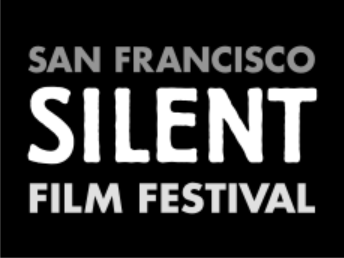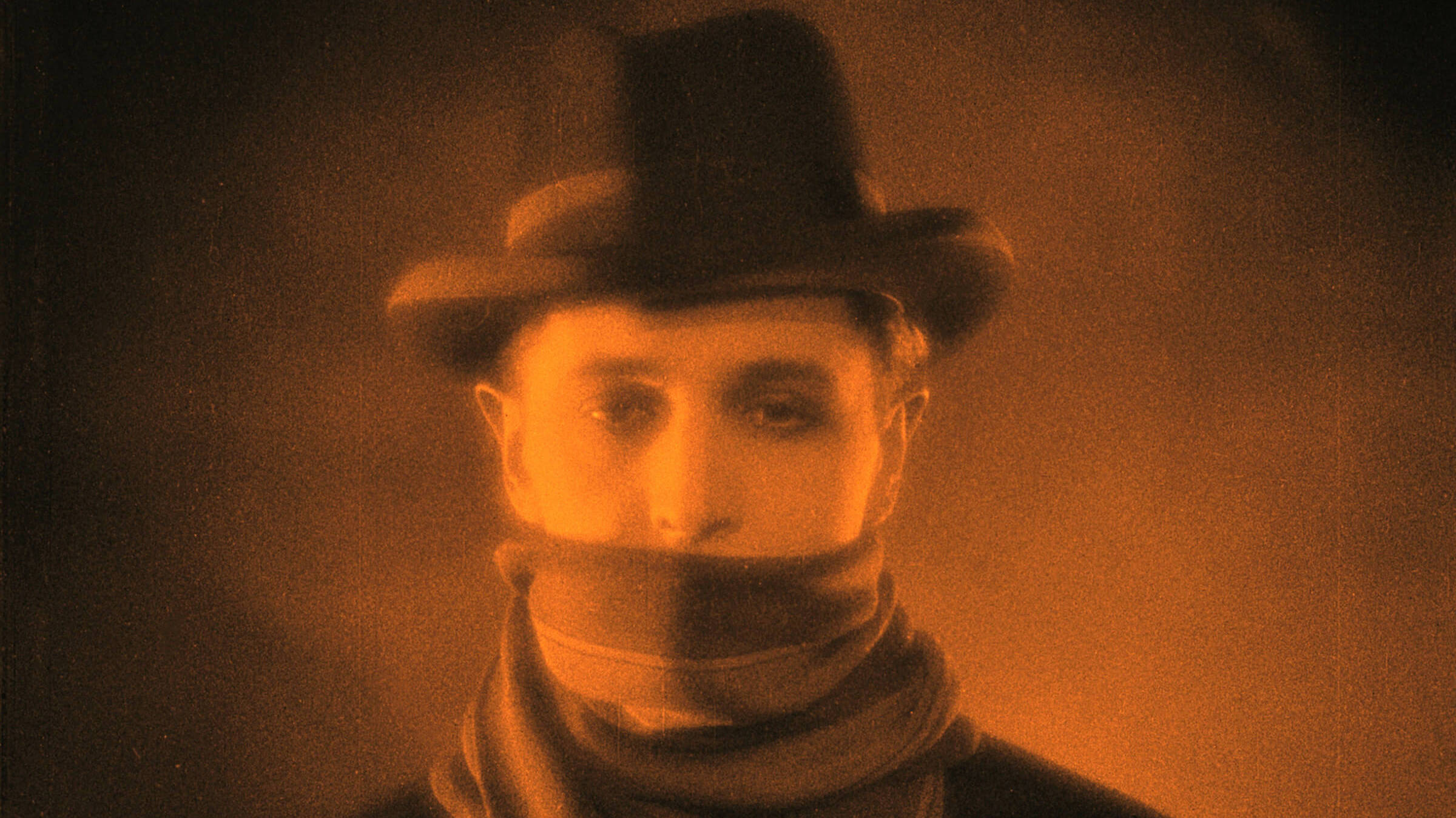“The Lodger was the first true ‘Hitchcock’ movie.” —Alfred Hitchcock
The Lodger: A Story of the London Fog was Hitchcock’s first thriller, and his first critical and commercial success. Made shortly after Hitchcock’s return from Germany, the film betrays the influence of the German expressionist tradition established in such films as The Cabinet of Dr. Caligari (1919) and Nosferatu (1922). These films, which used stylized, angular sets and high contrast light and shadow to convey disturbed psychological states, were a major influence on the developing director.
The Lodger was a best-selling novel by Marie Belloc Lowndes, first published in 1913, loosely based on the Jack the Ripper murders. Hitchcock knew the book—and was a lifelong fan of crime fiction—and it gave him the opportunity to feature what was to become a favorite theme—the hunted man. The casting of the matinée idol Ivor Novello as the mysterious lodger who falls under suspicion also heralded another favorite device: casting against type to play off audience expectations. June Tripp, the young actress who starred as the landlady’s daughter, Daisy, was the second of a long series of actresses who were either blonde or became blonde for Hitchcock—the first was Virginia Valli, star of The Pleasure Garden (1925).
Joe, Daisy’s policeman fiancé, jokes, “I’m keen on golden hair myself, same as the Avenger is.” It soon became clear that Hitchcock had similar tastes. The film is also distinctive for its bold use of visual devices, such as the glass floor through which we can see the lodger anxiously pacing. Allegedly because of a shortage of extras, Hitchcock made his first cameo appearance and can be glimpsed both in the newsroom and as a bystander in a crowd scene.
The Lodger was a great success, and quickly established Hitchcock as a name director. But the film was almost not released at all. After a private industry screening, distributor C. M. Woolf, somewhat jealous of Hitchcock and distrustful of ‘art,’ told the director, “Your picture is so dreadful, that we’re just going to put it on the shelf and forget about it.” In the end the film was released, thanks to the championing of Gainsborough boss Michael Balcon and Ivor Montagu. A few rough sequences were re-shot but, more importantly, Montagu reduced the number of title cards by three-quarters, and added designs by artist E. McKnight Kauffer. This was the version that was shown to the press in September 1926, to be described in glowing terms by trade journal Bioscope: “It is possible that this film is the finest British production ever made.”
The Restoration
As the negative no longer exists, the source material for the restoration was a number of nitrate prints, held at the BFI National Archive since the 1940s, and other material that had been made from them in the various restorations over the years. An international search proved that our material was unique and, importantly, the access to Ivor Montagu’s hand-corrected list of edited intertitles showed that the film’s continuity had survived extremely well.
After identifying and scanning the best material, several hundred hours were spent on the removal and repair of dirt and damage, resulting in a far cleaner image. The Lodger was tinted and toned on its original release, the differing colors used to dramatic effect. Earlier photochemical restorations had reproduced these effects, but digital imaging systems allow incredible scope for adjusting the contrast and depth of the colors to ensure a balance with the underlying black and white cinematography. Particular attention was paid to the nighttime sequences set in thick fog that are toned blue and tinted amber.
A BFI/Park Circus Films Release • 90 minutes • 35mm
Restoration by the BFI National Archive in association with ITV Studios Global Entertainment, Network Releasing, and Park Circus Films
Principal restoration funding provided by The Hollywood Foreign Press Association and The Film Foundation,
and by Simon W. Hessel
Additional funding provided by British Board of Film Classification, Deluxe 124, Shivendra Singh Dungarpur,
and Ian and Beth Mill
Presented at The Hitchcock 9 event in 2013 with live music by Mont Alto Motion Picture Orchestra

